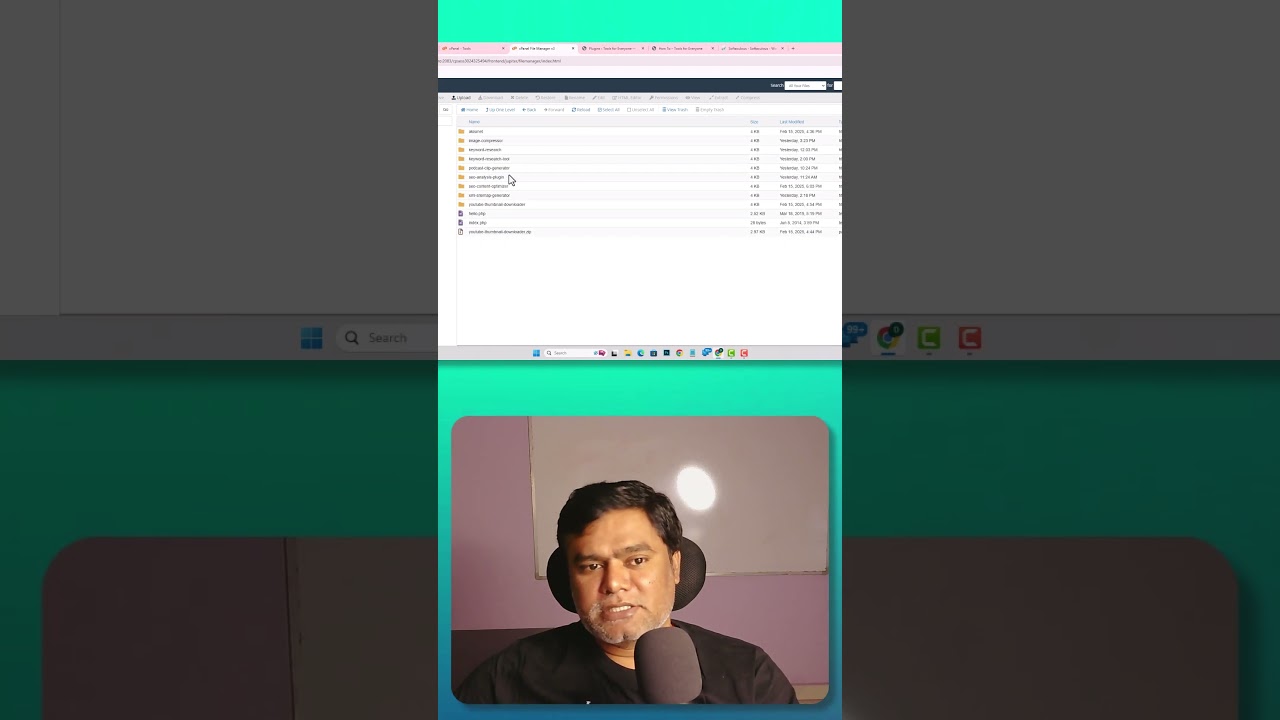Blog
Create a WordPress Plugin with Deepseek AI ##deepseek #deepseektutorial

Introduction to WordPress Plugins
Creating a WordPress plugin can seem daunting, but with the right guidance, anyone can do it. Plugins extend the functionality of a WordPress site, making it more dynamic and tailored to specific needs. In this post, we will explore the process of developing a WordPress plugin using Deepseek AI, an innovative tool that enhances workflow and creativity for developers.
Understanding Deepseek AI
Deepseek AI is a groundbreaking artificial intelligence platform designed to streamline software development. By using machine learning algorithms and natural language processing, it assists developers in generating code snippets, automating mundane tasks, and facilitating idea generation. Its applications in WordPress plugin development are numerous, making it an invaluable asset for both new and experienced developers.
Why Develop a WordPress Plugin?
Before diving into coding, it’s essential to understand the benefits of creating a WordPress plugin.
Flexibility and Customization
Plugins allow you to customize your website’s functionality without altering core WordPress files. This means you can add features tailored to your audience’s needs, offering a unique user experience.
Monetization Potential
If you plan to develop a plugin that solves common problems or enhances existing functionalities, there’s potential to monetize it. Many developers offer premium versions of their plugins or provide additional features for a fee.
Community and Support
The WordPress community is vast and supportive. By contributing a plugin, you can connect with other developers, gain recognition, and even collaborate on future projects.
Setting Up Your Development Environment
To start the plugin development process, you need to set up a local development environment. Here’s a step-by-step guide.
Choose a Local Server
Use software like XAMPP or Local by Flywheel to set up a local server where you can test your plugin without affecting a live website.
Install WordPress
Download the latest version of WordPress and install it on your local server. Create a database via PHPMyAdmin to connect with WordPress.
Prepare Your Workspace
Navigate to the wp-content/plugins directory in your WordPress installation. Create a new folder for your plugin, giving it a unique and descriptive name to avoid conflicts.
Structuring Your Plugin
A well-structured plugin not only helps in maintainability but also makes it easier for others to use and understand your code. Here’s an essential structure for your WordPress plugin.
Main Plugin File
Create a PHP file in your plugin folder with the same name as the folder. This file will contain the plugin’s metadata and primary code. Start it with the following comment block:
php
<?php
/**
- Plugin Name: Your Plugin Name
- Description: A brief description of your plugin.
- Version: 1.0
- Author: Your Name
*/
Additional Files
Depending on your plugin’s functionality, you may need to include other files, such as:
- CSS Files: For styling your plugin’s interface.
- JavaScript Files: For enhancing interactivity.
- Template Files: For rendering specific outputs.
Developing the Core Functionality
At this stage, you will define the primary features of your plugin. Let’s walk through the fundamental steps.
Setting Up Hooks
WordPress hooks (actions and filters) allow your plugin to interact with WordPress functions. Use add_action() and add_filter() to tap into WordPress at critical points. For example:
php
add_action(‘init’, ‘your_function_name’);
Creating Shortcodes
Shortcodes enable users to add your plugin’s functionality anywhere on their site. Define a shortcode like this:
php
function your_shortcode_function() {
return ‘Your shortcode output’;
}
add_shortcode(‘your_shortcode’, ‘your_shortcode_function’);
Integrating Deepseek AI
Deepseek AI can assist hugely in this phase. Utilize its capabilities to generate boilerplate code or find efficient solutions to common problems you encounter during development. Simply input your needs, and let the AI guide you in crafting snippets that you can integrate into your plugin.
Testing Your Plugin
Once you’ve developed the core features, testing is crucial. Here’s how to ensure your plugin works flawlessly.
Debugging with WP_DEBUG
Enable the debug mode in your wp-config.php file to display errors:
php
define(‘WP_DEBUG’, true);
This will help identify issues during testing.
Manual and Automated Testing
Manually test your plugin by activating it on your local WordPress site and performing a series of actions to ensure every component works. You can also employ automated testing frameworks like PHPUnit for thorough checks.
Preparing for Release
Before releasing your plugin, follow a few best practices to ensure it meets WordPress standards.
Documentation
Create comprehensive documentation explaining how to install, configure, and use your plugin. This will significantly enhance user experience and support.
Version Control
Implement version control using platforms like Git to track your changes and collaborate with others.
Submitting to the WordPress Repository
To share your plugin with the WordPress community, register on the official WordPress Plugin Directory. Follow the submission guidelines to ensure a smooth approval process.
Marketing Your Plugin
Once your plugin is live, the next step is to market it effectively to attract users.
Engage with Your Audience
Utilize social media platforms, forums, and WordPress communities to engage with potential users. Share insights and updates about your plugin and encourage feedback for improvements.
Optimize for SEO
Enhance your plugin’s visibility by optimizing its description and website for search engines. Use relevant keywords that potential users may search for, improving your chances of appearing in search results.
Continuous Improvement
Solicit user feedback to understand strengths and weaknesses. Regularly update your plugin based on this feedback, ensuring it remains relevant and efficient.
Conclusion
Creating a WordPress plugin with Deepseek AI is not only an achievable task but also a rewarding venture. By setting up the right environment, structuring your plugin effectively, and utilizing AI for development, you can craft a valuable tool that benefits users and contributes to the WordPress ecosystem. Remember to market your plugin and keep it updated to maintain relevance. With commitment and innovation, your plugin can become a staple resource for WordPress users.

